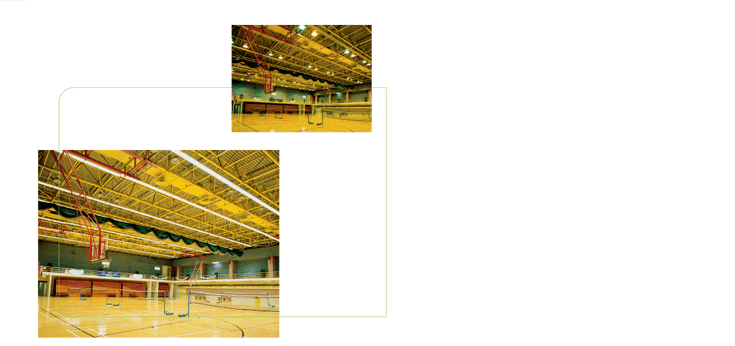| |
|
|
|
|



|
|||||
 |
|||||
 |
|||||
 |
P.11
Pilot project is conducted to compare the new high-output T5 lighting system (left) with the high-bay lighting system (above) at an indoor games hall.
Technical data will be collected to monitor the effectiveness and performance of the solar photovoltaic panels.
The Energy Efficiency Office was established in 1994 to spearhead the drive for energy efficiency and conservation programmes in Hong Kong. We combine an in-depth understanding of the latest technological breakthroughs with knowledge of the precise needs of the Hong Kong community. The Office works to establish guidelines and issue codes of practice, and is actively involved in working groups and related committees that investigate the efficient use and conservation of electricity. To help Hong Kong save energy and protect, sustain and improve its environment, we have implemented a range of initiatives, including Energy Management and Demand Side Management programmes, energy end-use database management, benchmarking, and an energy efficiency labelling scheme. The Office is also engaged in pioneering the use of innovative energy-saving technologies, particularly in air conditioning, lighting and lift and escalator control systems. Our successes in this direction will contribute to the sustainable development of Hong Kong.
INTRODUCING
THE LATEST ENERGY EFFICIENT EQUIPMENT
One of
EMSD's ongoing pursuits is the exploration of the latest energy technology
for application in Hong Kong. The introduction of the new T5 fluorescent lamps
and luminaries - designed to optimise energy consumption and to minimise impact
on the environment - is but one good example of our recent endeavours. Pilot
projects at two major indoor games halls in Kowloon were conducted to compare
the new high-output T5 lighting system with the existing high-bay lighting
system. A Digital Addressable Lighting Interface (DALI) dimmable control system
to manage the various functions and illumination requirements was also used
in one of the pilot projects.
Results show that the T5 lighting
system is far more energy efficient - with an energy saving of more than 50
per cent. Moreover, it also boasts an average luminance 58 per cent higher
than that of the high-bay lighting
system, and is favoured by users for its better lighting quality.
The pilot projects have generated very positive feedback
from the lighting industry. Both manufacturers and users have become more
aware of the benefits of the T5 lighting technology and related products.
The new market trend has further
driven down product pricing, making the technology even more attractive to
the trade. T5 lamps have now been specified by major developers in their new
buildings.